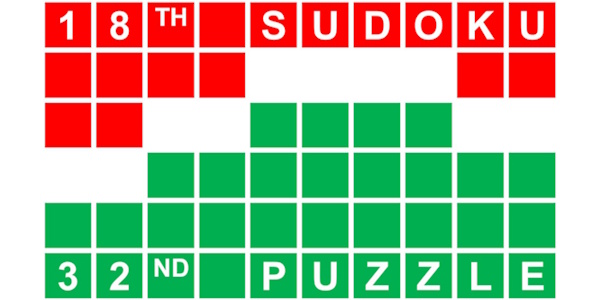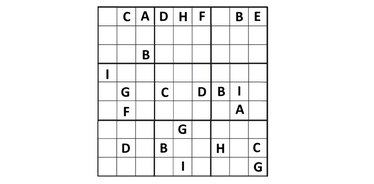It's a common misconception that Sudoku is a Japanese game. In fact, it was invented by a Swiss mathematician. The first puzzles were published in France in 1895, not in Switzerland or Italy.

However, the Latin squares created by the Swiss were different from those invented later on. It's thought that the official author of Sudoku is Howard Garns from the United States. He shared his puzzles in Dell Pencil Puzzles and Word Games in 1979, with the goal of "stretching the mind." It seems that the game quickly gained popularity. As it stands, the three-time world Sudoku champion is Thomas Snyder, a US citizen. Garnes' puzzles were called Number Place because you had to put numbers in empty cells, and the game was played on a 9 x 9 grid.
Meanwhile, the Japanese were also getting into the puzzles. By 1984, the game with numbers had started to appear in local newspapers and magazines. It was given the nickname "Sudoku". The name actually comes from a long Japanese expression: Sūji wa dokushin ni kagiru. The phrase basically means "numbers are limited to one location." The Japanese native holds the record for the most world titles. There's still a lot of interest in Sudoku in the country today. Over 600,000 copies of the magazine are sold every month.
Why is Sudoku so popular in Japan?
There are a few reasons for Sudoku's popularity. One is the mentality of the Japanese, who are naturally curious. It's worth noting that Japanese characters aren't particularly suited to crosswords. This is why numbers have become such a universal language of communication.
Another reason for Sudoku's popularity is that Japan is a country with a complex geography. It takes people 2-3 hours to get to work each day. To pass the time (and also to keep their minds active), they play Sudoku.
Interesting facts about Sudoku
The first computer program was created by Wayne Gould. He wasn't a programmer by trade, but he worked as a judge.
Puzzles, which were published in 1979 in Dell Pencil Puzzles and Word Games, were once not as popular among Americans. In 1997, Wayne Gould reintroduced them. A judge from New Zealand was the driving force behind the game's new popularity.

The Times of London started running Sudoku in 2004. The Conway (New Hampshire) Daily Sun was the first US paper to run the puzzle in a modern version.
The first World Sudoku Championship took place in 2006. The event was held in Lucca, Italy. The event is set to take place in Canada in 2023. In 2013, the World Cup was held in Beijing.
Thomas Snyder holds the record for solving Sudoku puzzles the quickest. He's also a three-time world champion.
What's behind the logic puzzle's current popularity? You can play Sudoku not only in magazines and newspapers, but also online. All you need to do is download and install a mobile app on Android or iOS. The software often has extra features like hints, quick selection of difficulty level and so on.
It doesn't matter if you're new to Sudoku or a seasoned pro, it's a great intellectual challenge for everyone. It's a great way to flex your mental muscles, get your brain in shape and give your left hemisphere a workout. The rules are straightforward and easy to understand. Numbers are a language everyone can understand, no matter where you're from.



